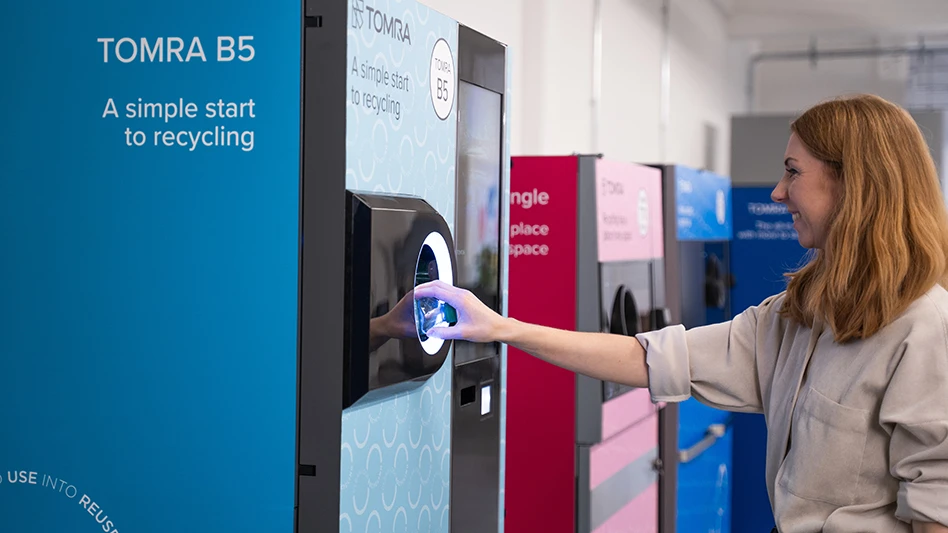
pepebaeza | stock.adobe.com
The Aluminum Association, Arlington, Virginia, has released a new white paper developed in collaboration with Wittsend Commodity Advisors, “Powering Up American Aluminum: A Roadmap for Next Generation Supply Chain Resilience,” outlining pathways to move the United States industry toward greater self-sufficiency in its domestic aluminum supply.
“Aluminum is a critical material for our nation’s economic and national security—found in everything from cars and cans to fighter jets, tanks and the electric grid,” Aluminum Association President and CEO Charles Johnson says. “Even if we could flip a switch and turn on every idled aluminum smelter tomorrow, the U.S. industry cannot currently produce nearly enough metal to make the products that Americans rely upon. This new research shows us that greater self-sufficiency will require an all-of-the-above approach to energy, trade and recycling policy to ensure that U.S. manufacturers have abundant, affordable metal.”
Achieving U.S. aluminum self-sufficiency will require time, money and commitment from the public and private sectors to build new smelters and recycle more aluminum, according to the association.
The white paper focuses on three main pathways to address aluminum supply:
- building new or restarting idled primary aluminum smelters;
- recovering and recycling more domestic postconsumer aluminum; and
- importing metal from partners, specifically Canada.
The association says opportunities exist to build new aluminum smelting capacity in the U.S. However, these facilities could take up to six years to build and would require multibillion-dollar investments and long-term, competitive contracts, as well as the equivalent annual electricity usage of the city of Boston or Nashville. To fully meet current metal needs, the Aluminum Association says the U.S. would need to build around five 750,000-metric-ton smelters. The largest fully operational smelter in the United States currently is 220,000 metric tons.
Slightly less than half of installed U.S. primary aluminum capacity is in operation, and the association says bringing this metal back online from four existing smelters would require long-term, competitively priced power contracts and significant capital investment. Even then, restarting all idled smelters would meet only around 15 percent of the current 4 million-metric-ton metal supply gap, according to the Aluminum Association.
While domestic primary production has declined over recent decades, recycled aluminum production has grown. The Aluminum Association says recycling aluminum is about 95 percent less energy-intensive than primary production and relies largely on aluminum scrap as an input material. Building aluminum recycling facilities is less capital-intensive, and collecting and recycling the estimated 1-2 million metric tons of usable scrap currently landfilled or exported would meet 25 percent to 50 percent of the existing U.S. metal supply gap, the association adds.
As the industry works to produce more domestic aluminum, the association says access to affordable, reliable Canadian primary aluminum will be a vital bridge for metal supply given its price and domestic job creation.
“The United States is a powerhouse in aluminum production and fabrication against global competitors; that strength relies on imports of upstream aluminum, both smelted and scrap, from Canada,” Johnson said in a Feb. 11 statement.
The Aluminum Association says electricity requirements could create challenges for industry self-sufficiency. A new aluminum smelter uses approximately 11 terawatt hours, and to be economically competitive, a smelter requires a 10-20-year contract with electricity costs of approximately $40 per megawatt-hour.
Read the white paper and learn more about what the Aluminum Association says is needed to boost U.S. aluminum production.
Latest from Recycling Today
- ReMA urges open intra-North American scrap trade
- Axium awarded by regional organization
- China to introduce steel export quotas
- Thyssenkrupp idles capacity in Europe
- Phoenix Technologies closes Ohio rPET facility
- EPA selects 2 governments in Pennsylvania to receive recycling, waste grants
- NWRA Florida Chapter announces 2025 Legislative Champion Awards
- Goldman Sachs Research: Copper prices to decline in 2026





